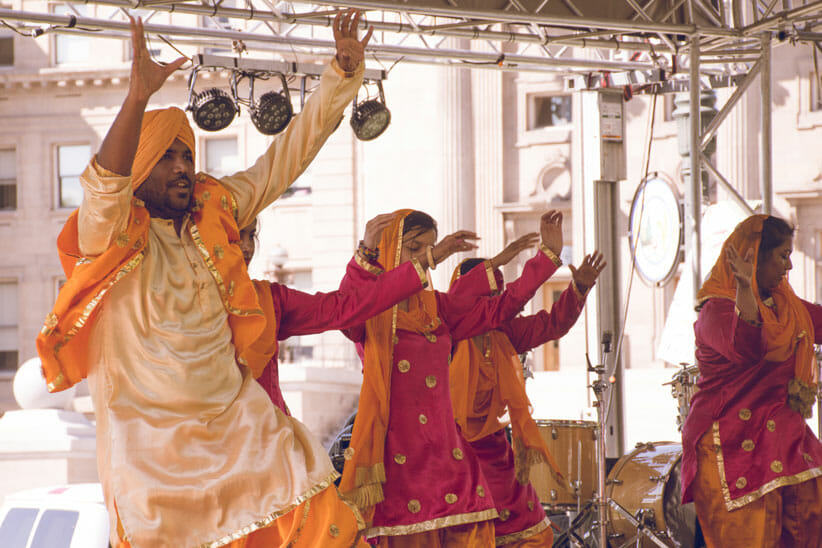
How Music Entrains our Minds for Positive Well-Being
Humans respond to music emotionally and science shows us that it does something unique to our brain. Ultimately music promotes wellness and well-being. Brainwave entrainment is the phenomena that neural waves synchronize to a new pattern in response to stimuli, and music is a powerful tool for this.
In essence, entrainment is the biology of rhythm and how it causes gradual synchrony. It’s the way the body gradually syncs with either a biological or external rhythm and the magic is that it happens unconsciously. Entrainment is a concept first identified by Dutch physicist Christiaan Huygens in 1665 through the study of clocks. He found it took less energy for them to become synchronized then to beat separately when in close proximity. This has been found to occur in many instances throughout nature.
Ancient Wisdom of Rhythm & Repetition
The use of this science dates back thousands of years and ancient cultures were aware of how the brain could be entrained through sound repetition well before modern science was able to prove the process.
If we look back through history, we find many examples of music being used as medicine and therapy. The ancient Greeks used music to ease stress, promote sleep, and soothe pain. The Native Americans and Africans used singing and chanting as part of their healing rituals. These sacred practices of course were not at the time referred to as brainwave entrainment, but what they did know was that sound had powerful healing properties.
In almost every ancient culture, repetitive beat formats have played an important role in wellbeing and prosperity. Through the use of repetitive drumming and chanting, Tibetan monks, Native American shamans, Hindu healers and master Yogis have been able to induce specific states of being for deep meditation, transcending consciousness and healing.
The Science Behind Synchronous Harmony
Music has a unique power to interact with the body and mind. The physical body is a vastly complicated universe. Like the systems of the universe, it is composed of many layers of nested systems each operating in different cyclical patterns. Some of the most easily identifiable cyclical patterns include breath, the beating heart, the sleep cycle, cycles of menstruation and the cycles of brain waves.
Music is also composed of interlocking cycles. Rhythmic music, punctuated by the beats of drums, claps, voices or other percussive instruments, mark clear beats, periodicities and tempos. Rhythms found around the world can be widely diverse and variously correspond to heightened or relaxed experiences of activity. All melodic tones are comprised of vibrating waveforms defined as cycles per second or hertz frequencies. By vibrating a waveform at a specific frequency, for example 440 times in one second, we get a note generally agreed upon as “A”.

The way biochemical processes in the body and music interact is not only an ancient phenomenon of world cultures but also a blossoming new field of scientific research.
Ritual drumbeats of shamans have been identified to often occur at 4.5 beats per second. This pulse would correspond to a BPM (beats per minute) of 270, which would be quite fast for modern music. The loud, repetitive and pulsing nature of the drumbeat leads to experiences of deep trance states. Interestingly this cycle is similar to the brain wave state classified as Theta.
Brain waves are neural oscillatory patterns that correspond to different states of consciousness. They are also measured in cycles per second (hertz) and occur in frequency bands. The range of Theta occurs between 4-8 Hz and is associated with REM (dreaming) sleep and meditation.
Brain Wave Frequency Associations
Delta Wave 0.1 – 4 Hz Very Deep Sleep, repair immune system
Theta Wave 4 – 8 Hz REM (dreaming) sleep, deep relaxation, no thought meditation Alpha Wave 8 – 15 Hz Relaxed focus, daydream
Beta Wave 15 – 31 Hz Thinking actions, anxiety, stress
Gamma Wave 31 – 100 Hz. Increased mental activity, problem solving, consciousness

Different activities can stimulate different states in the brain. The practice of meditation can drop activity in the parietal lobe, which governs sensory awareness. Music has been used to stimulate the brain waves to follow the pattern of a desired state. For instance, someone with a lot of stress could benefit from channeling the brain waves into a frequency of alpha, theta, or delta. This is called “frequency following response” and can be achieved through different methods.
An effective way is through the use of musical tones. Isochronic tones (from Greek iso- equal and chrono time) have been found to strongly entrain the brain to the desired wavelengths. These tones turn on and off rapidly creating a pulsating sound similar to that of the shamanic drumbeats. An example can be heard here (Headphones are not required).
Another method involves Binaural Beats. Primarily used with headphones, a strong stereo signal feeds two different tones into each ear. The listener then “hears” a resulting frequency, which becomes the entraining tone. Binaural beats have been used in psychotherapy to improve sleep, reduce anxiety and enhance cognition and creativity. An example can be heard here (Headphones required for best effect).
How Music Promotes Wellness and Helps us Find Rhythm that Supports our Lives

Music plays an important role in our lives. All of our journeys are highly individual and there is a unique personal soundtrack that mirrors all our personal journeys. Music evokes vivid memories and emotions, past experiences, future desires and dreams.
If you have ever been moved by a piece of music or experienced a life changing live musical performance; if you’ve created music or have found solace in playing an instrument or listening to your favorite artist, you have experienced the power of music and now we know that science shows that it can support us to heal. Using music in combination with movement practices, pranayama, meditation can assist in helping people become more “in tune” to their own rhythm and the rhythms of the world around them.
Tuning into Rhythms
“The interlinking rhythms of breath and heart give us the primary embodies experience of the pulse of life. This in and out, rising and falling, contracting and expanding, is mirrored in all of life, from the subatomic pulse of the atomic-quantum world to the pulsing vibration of the stars.”
– Shiva Rea
Tending the Heart Fire
Natalie Macam co-wrote this article. Natalie is a regular contributor to LA Yoga and Namaskar magazines and she has been one of Shiva Rea’s Senior Assistants for 6 years. Her public classes are offered in LA and she is also a classical Indian music devotee studying with Kamini Natarajan.
Joss Jaffe is a Vocalist, Tabla player, multi-instrumentalist, composer and record producer. He has 4 albums of original music. His most recent album “Meditation Music” debuted at #3 on the Billboard New Age Chart on October 4th 2019. He has collaborated with Grammy Nominated Artists Jai Uttal, Silvia Nakkach and Dave Stringer as well as Grammy Award winning Reggae artist Mykal Rose of Black Uhuru.
